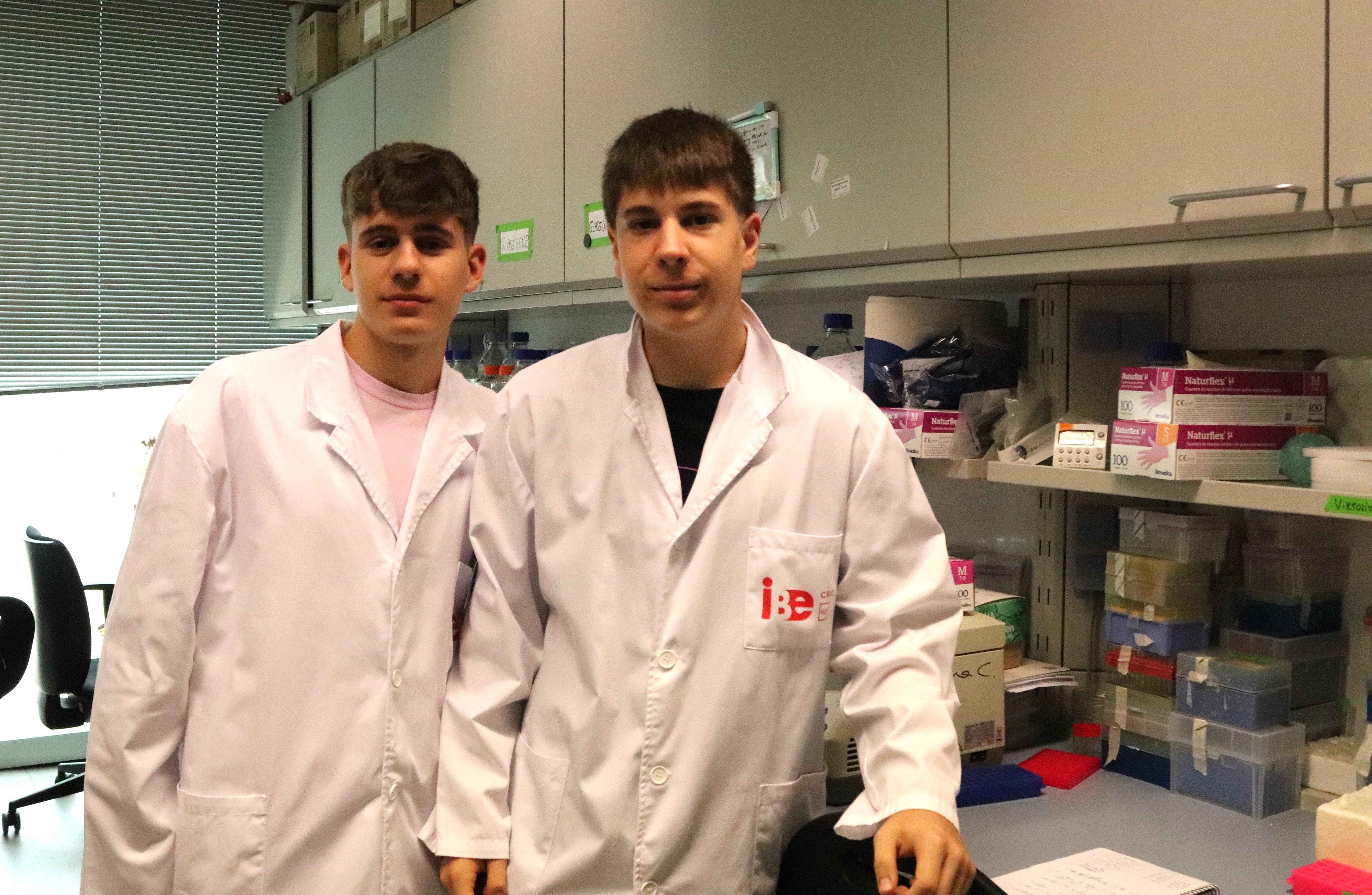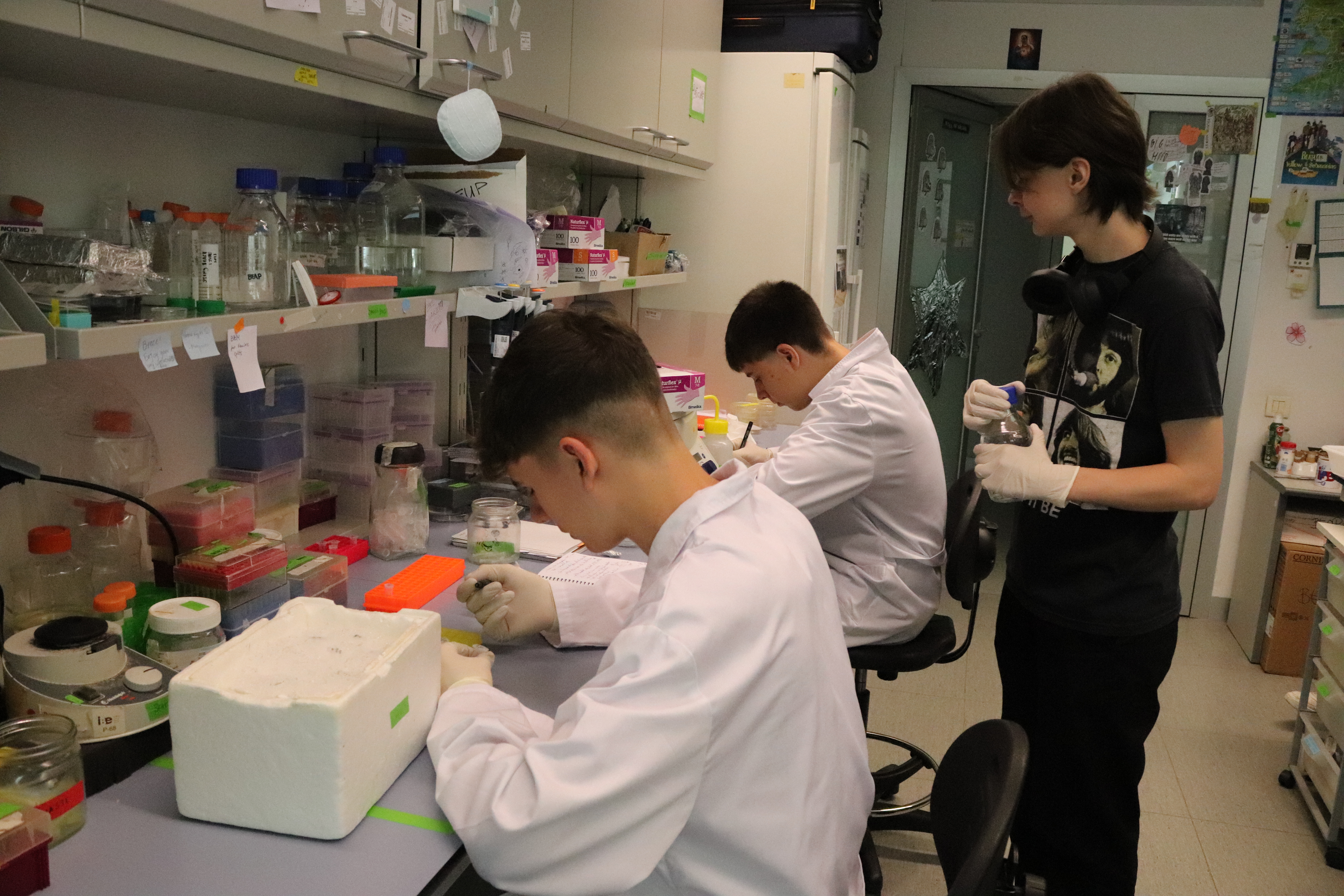La ciencia más joven vuelve al IBE este verano
Un año más, Instituto de Biología Evolutiva (IBE) participa en la iniciativa “Joves i Ciencia” de la Fundación Cataluña - La Pedrera.
Durante este mes de junio, dos estudiantes de bachillerato han investigado en el laboratorio de Biología y Ecología de Protistas Abundantes del IBE.
Acompañados del equipo de Daniel Richter, Edgar Pérez y Joan Soler aprenden a caracterizar protistas más abundantes del planeta.

Un año más, el IBE participa en el programa de investigación de verano "Joves i Ciència", organizado por la Fundación Catalunya-La Pedrera. Esta iniciativa busca preparar a los científicos y científicas del futuro a través de oportunidades de investigación únicas.
Este mes de junio, los estudiantes de bachillerato Edgar Pérez y Joan Soler han realizado prácticas en el laboratorio de Biología y Ecología de Protistas Abundantes del IBE dirigido por Dan Richter. Con la ayuda del equipo científico del IBE, los estudiantes han aprendido a caracterizar protistas, unos microorganismos eucariotas unicelulares clave para los ecosistemas marinos.
Un mes en el laboratorio de Biología y Ecología de Protistas Abundantes del IBE
Durante un mes, Edgar y Joan se han unido al grupo laboratorio de Daniel Richter, que estudia los protistas (microorganismos eucariotas) más abundantes del planeta. A pesar de medirse en micrómetros, los protistas son una parte crítica de las cadenas alimentarias en todos los principales ecosistemas de la Tierra. Sin embargo, son unos grandes desconocidos y por ello el laboratorio del IBE tiene como objetivo aislarlos, cultivarlos y caracterizar su biología celular, comportamiento, relevancia ecológica y evolución.

Edgar Pérez, Joan Soler y Daryna Zavadska en el Laboratory of Biology and Ecology of Abundant Protists.
El grupo reúne muestras de agua marina de distintos rincones del mundo, desde las playas de Grenada (Mar Caribe) a las aguas del mediterráneo, donde pueden encontrarse miles de protistas por explorar. El objetivo de Edgar i Joan este mes ha sido identificar y caracterizar las distintas especies de protistas marinos de algunas de estas muestras. Para ello, han aprendido técnicas básicas de biología molecular, extraer ADN, realizar cultivos y muchos otros conocimientos de bioinformática, análisis de datos y evolución de protistas. ¿Cómo lo han hecho?
Un día en las prácticas de “Joves i Ciència”
Con la ayuda de las estudiantes de doctorado del IBE, Daryna Zavadska y Margarita Skamnelou, los jóvenes investigadores han amplificado, clonado y secuenciado genes 18S rRNA de cultivos de protistas. La secuencia del gen marcador obtenida se ha utilizado para identificar la especie a la que pertenece el protista en cuestión.

Se han utilizado técnicas de microscopia para investigar la morfología y el comportamiento de estos protistas.
Después de identificarlo, el equipo ha investigado el comportamiento y la morfología del protista utilizando técnicas de microscopía. Gracias a ello han observado protistas ciliados rodeados de bacterias en una muestra de agua marina de San Francisco. Los ciliados se caracterizan por la presencia de estructuras en forma de pelos llamadas cilios, que utilizan para moverse y alimentarse.

Ciliate protist surrounded by bacteria in a sample of seawater from San Francisco.
Aprende más sobre Biology and Ecology of Abundant Protists Lab y síguelos en sus redes sociales, @beaplab_ibe, para continuar explorando el mundo de los protistas.






















